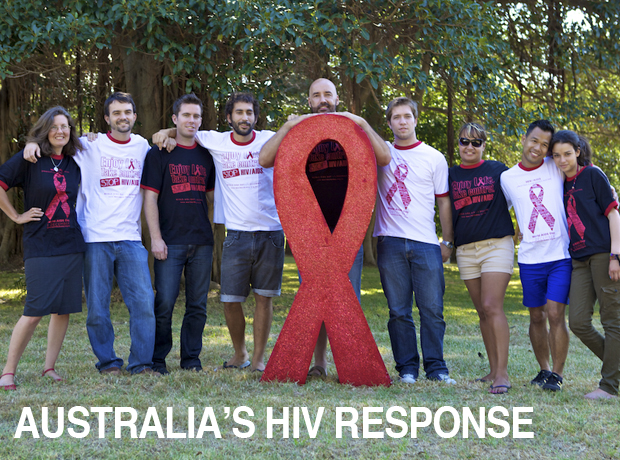HIV Media Guide
Information for journalists
National HIV Strategy
Since the launch of the first government response to HIV in 1989, Australia’s national HIV strategies have been pivotal to the success of Australia’s response to HIV prevention, and the treatment and care of people living with HIV.
Australia’s Seventh National HIV Strategy 2014 – 2017 was launched in July 2014. Under the new Strategy, Australia will upscale ongoing efforts to:
- reduce the incidence of HIV;
- reduce the risk behaviours associated with the transmission of HIV;
- increase the proportion of people living with HIV on treatments with undetectable viral load;
- decrease the number of people with undiagnosed HIV infection; and
- improve the quality of life of people living with HIV.
Significantly, the Seventh National HIV Strategy sets ambitious targets, reflecting Australia’s international commitments under the UN Political Declaration on HIV 2011, namely to:
- end new HIV infections in Australia by 2020 – with a 50% reduction by 2017; and
- increase treatment uptake by people with HIV to 90 per cent.
Download the 7th National Strategy
Under the new Strategy, the primary guiding principles which have been the core of Australia’s partnership response to HIV in Australia remain in place. These principles will inform the framing of priority actions to meet Strategy targets and objectives - including priority actions to address HIV-related stigma and discrimination, and the criminalisation of people with HIV and affected communities. These principles include recognition that:
- The Ottawa Charter for Health Promotion provides the framework for effective HIV, STI and viral hepatitis health promotion action and facilitates the:
- active participation of affected communities and individuals, including peer education and community ownership, to increase their influence over the determinants of their health
- active participation of affected communities and individuals, including peer education and community ownership, to increase their influence over the determinants of their health
- formulation and application of law and public policy that support and encourage healthy behaviours and respect human rights as this protects those who are vulnerable or marginalised, promotes confidence in the system and secures support for initiatives.
- Harm reduction principles underpin effective measures to prevent transmission of HIV and viral hepatitis, including through needle and syringe programs (NSPs) and drug treatment programs.
- People with HIV, STIs and viral hepatitis have a right to participate in the community without experiencing stigma or discrimination, and have the same rights to comprehensive and appropriate health care as other members of the community (including the right to confidential and sensitive handling of personal and medical information).
- An effective partnership of governments, affected communities, researchers and health professionals is characterised by consultation, cooperative effort, respectful discussion and action. This includes:
- leadership: strong and visible leadership by the National Government (including bipartisan support), and by all other relative parties
- leadership: strong and visible leadership by the National Government (including bipartisan support), and by all other relative parties
- the HIV partnership: recognising the importance of a multi- sectoral response from government, community, people living with HIV, researchers and the fields of science and medicine
- the centrality of people living with HIV: ensuring policies and programs are informed by the experiences of people with HIV, are responsive to need, and take adequate account of the full range of personal and community effects of policy directions
- an enabling environment: delivering a supportive social, legal and policy environment that encourages people with HIV and affected communities to support and promote education and prevention, respond to education, access voluntary testing and treatment services, and participate actively in all levels of the response
- non-partisan response: ensuring the response does not become inappropriately ‘politicised’. The HIV strategies have historically had the bi-partisan support of the major political parties
- health promotion and harm minimisation: including addressing disease prevention, education, social mobilisation and advocacy, with an emphasis on a complete state of wellbeing, and recognising that vulnerabilities can be influenced only by a holistic approach, not just individual behaviours.
Two other essential components of Australia’s response have been:
- the provision of appropriate levels of funding
- the funding and delivery of expert research and surveillance data (developed with communities and service providers), ensuring that policy in response to HIV has been based on a sound evidence base.






